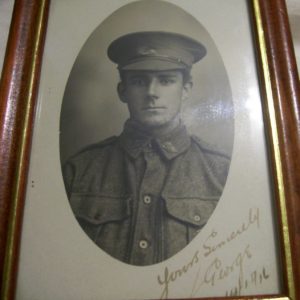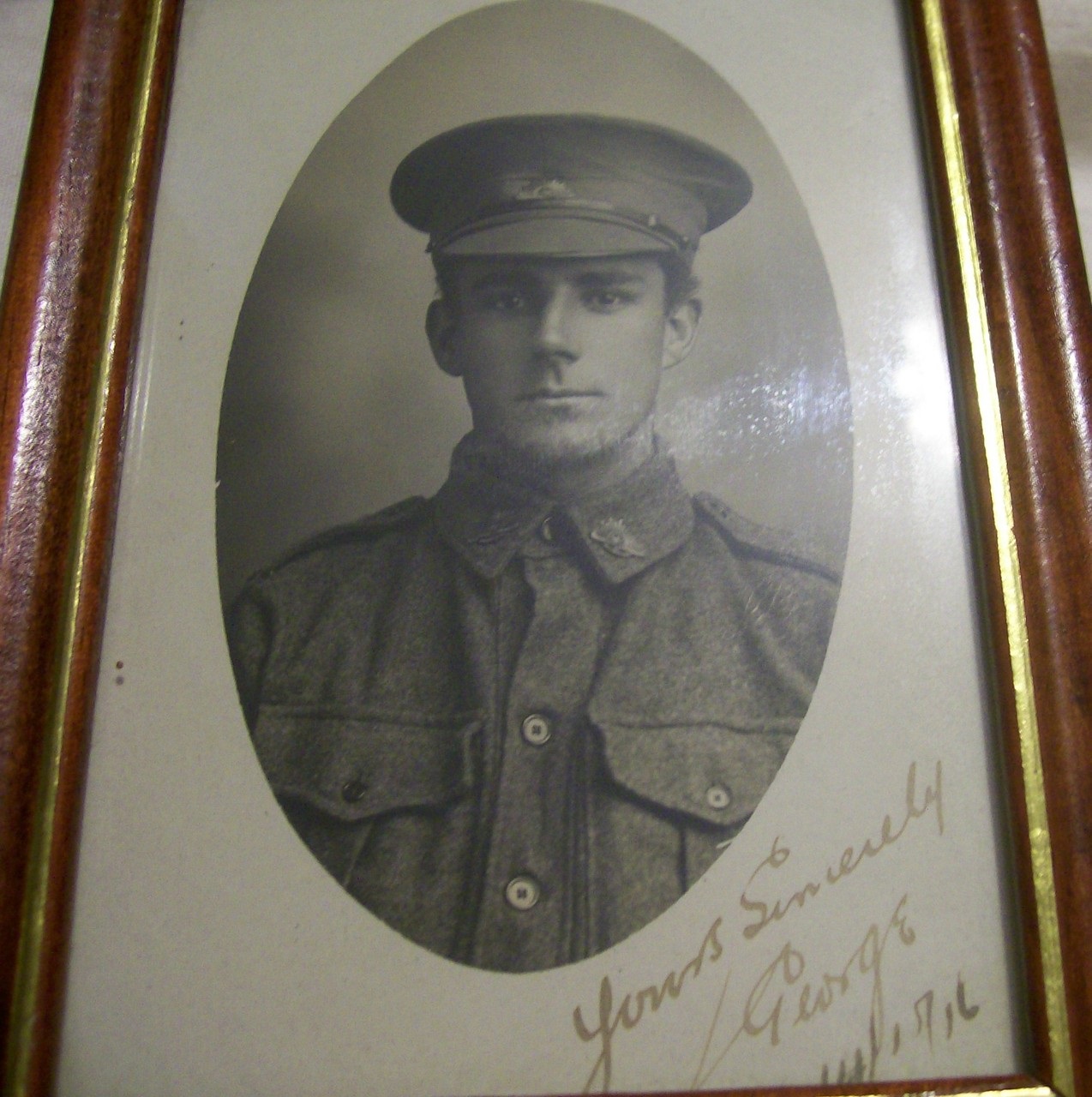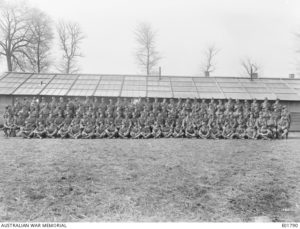
George Seers, 1916. Image courtesy Discovering Anzacs https://discoveringanzacs.naa.gov.au/browse/person/309846
As the people of Orange took to the streets on 11 November 1918 to rejoice in the news that Germany had surrendered and the Great War was over, the Reverend Canon Taylor of Holy Trinity Church made his way to McLachlan Street to deliver the heart-rending news to Thomas and Alice Seers that their son George had been killed in action six months earlier.
George Edward John Seers was one of fifteen men captured at Dernancourt on the Western Front in April 1918 during the German Spring Offensive. It was assumed that George was being held as a prisoner of war in Germany, but following an exhaustive search, the AIF declared, on 6 November 1918, that George had, in fact, been killed in action on 5 April 1918.
Born in Orange on 20 April 1891, George was the second of eight children of Thomas and Alice Seers. Orange historian William (Bill) Folster called Thomas “a pioneer roadmaker of the early days [of Orange]” who maintained the Great Western Road between Lucknow and Orange. He later worked as a labourer and foreman of works for East Orange Council.
Young George was educated at Orange Superior Public School. As a youth he volunteered with the 3rd Infantry Regiment. He later joined the Manchester Unity Independent Order of Oddfellows.
In 1909 George commenced work as a draper at Dalton Brothers Stores. George was popular and well respected by colleagues and customers alike. In October 1915 he renounced his position at Dalton Brothers and moved to Wagga, where he managed the drapery department of Messrs WG Huthwaite and Co.
In July 1916 George returned to Orange to spend a month with his family before enlisting in WWI. He enlisted at Dubbo on 15 August 1916 and was assigned to the 45th Battalion, 8th Reinforcement. George spent ten days at Dubbo camp before being transferred to Liverpool on 25 August.
Private Seers embarked for overseas service on 25 November 1916. He was marched in to the 12th Training Battalion No 4 Camp at Codford, England on 30 January 1917. In March he proceeded to the Western Front in France, and, on 11 August, was appointed Lance Corporal.
On 5 April 1918 George’s unit was ordered forward to assist the 47th Battalion at Dernancourt. George and several others in his company were in position in the support line trench when they were surrounded by the enemy and ordered to surrender. Apparently George was one of the last to do so and was observed being marched away, unwounded, with his hands above his head. Sometime later he was seen transporting wounded soldiers to the German line.
News reached Orange in early May that George was missing in action. It was assumed that he had been taken to Germany as a prisoner of war. The Leader of 14 June 1918 reported:
Mr. T. Seers, of McLachlan street, has received letters from the front, and letters have also been received by friends of his which lead to the belief that his son, Pte. George Seers, is a prisoner of war in Germany. One feature which points to this is the fact that half the battalion of which he was a member were made prisoners, and added to this the fact that his name has not been mentioned in any of the casualty lists lends color to the assumption.
Sadly, five months later, on 13 November, the Leader conveyed the following news:
The painfully sad news arrived on Monday just in the midst of the peace celebrations that private George Seers, son of our esteemed residents, Mr. and Mrs. Thomas Seers, of East Orange, had been killed in action, Canon Taylor conveying the information. The deceased soldier had been reported missing for six months, and although the worst was feared, the family clung to the hope that their gallant soldier was safe as a prisoner. Fate had decreed otherwise. Deceased was a fine young fellow, and his death is deeply deplored. He was about 28 years of age and a draper by trade. To Mr. and Mrs. Seers and family will go out the deepest sympathy in their hour of trial.
George Edward John Seers has no known grave. He is commemorated on the honour rolls at Orange Public School, Orange East Public School, Holy Trinity Church, the World War I Roll of Honour on the southern face of the Orange Cenotaph and on panel number 140 on the Roll of Honour at the Australian War Memorial in Canberra.
He is also remembered in Newman Park in Orange, where his name appears on a plaque commemorating former Orange East Public School students who were killed in action.
In 1923 the Anzac Memorial Avenue of trees was planted along Bathurst Road to commemorate fallen WWI soldiers. A tree was planted in honour of “Pte GEJ Seers”; it was donated by SV Austin. Very few of the trees are still standing today.
George’s cousin, Clarence Edgar Seers also served in WWI; he died of wounds in France in October 1918.


